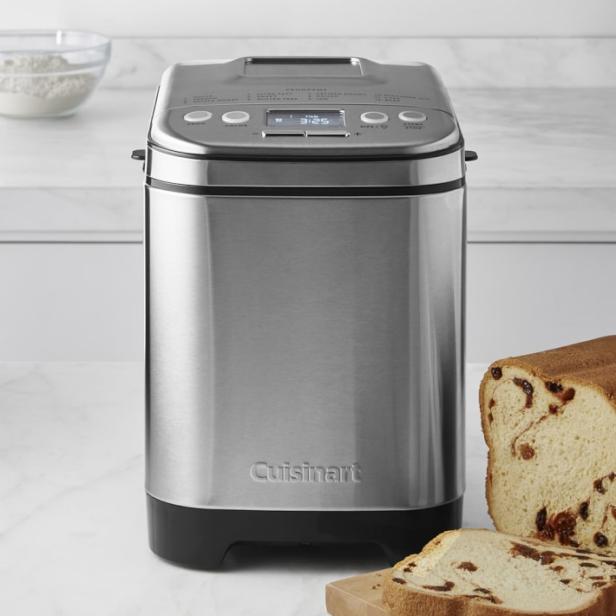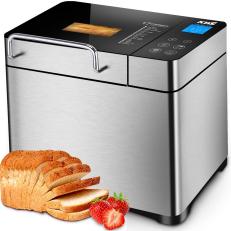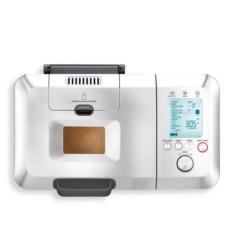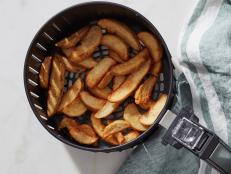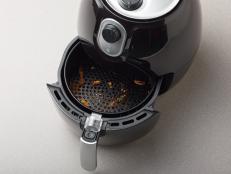What You Need to Know About Using a Bread Maker
It's the best thing to happen to your bread-making projects.

Lindsay Upson/Getty Images
By Leah Brickley for Food Network Kitchen
Bread makers (also known as bread machines) were once coveted kitchen tools, but much like the VCR and cassette player they fell out of fashion. Not because of new cutting edge technology, rather because American bakers (professional and novice) started to perfect the traditional method of making crusty breads like sourdough and baguette. Soon, everyone was more interested in buying a Dutch oven for no-knead bread instead of a bread maker for soft loaves of bread.
Most bread makers make only one texture of bread — soft bread — in only one shape — a loaf. Now, the bread maker is experiencing a renaissance. It’s convenient and problem-solving. No bread at the grocery store? No problem. Perhaps it’s the one-stop speediness — a bread maker mixes, proofs and bakes bread — or maybe it’s the nostalgia for soft bread of childhood. Either way, if you're a bread enthusiast with minimal time (or baking skills) then a bread maker is an excellent option.
How a Bread Maker Works
Your bread maker will make soft, fluffy loaves of bread. It can also make quick breads (like banana bread) or knead and proof doughs to be formed into other shapes like rolls, pizza and pretzel dough. It does this by kneading the ingredients together with a paddle until it reaches the programmed consistency, proofing (when needed) at a precise temperature and time and then baking until browned and cooked through. You can literally set it and forget it.
What to Do Before You Use a Bread Maker
Do your research.
If you've dusted off a bread maker from your basement, you can skip this step. If you're new to the bread making world, then there are options to consider. Every bread maker model is different: Some have multiple settings, others can make different size loaves, and some have special features like “make jam.” The variation from model to model can be vast. Read some product descriptions online and decide what features you want before buying.
Read the user's manual (twice).
Don’t chuck it out with the box. There's important info and tips about your new bread maker in the manual. (If the user's guide for your older model is long gone, we suggest searching for a PDF for your model on the Internet.) There will be multiple settings — like size and shade — which may be confusing, and some models recommend premixing the ingredients instead of using a dump-and-knead technique. Keep the manual nearby in a kitchen drawer to refer to as needed.
Find trustworthy bread maker recipes.
Your manual should have recipes that correlate with its features like regular bread, pizza dough, pasta dough and sometimes even jam. The manual is a great place to start if you don't already have a recipe mind. No matter what recipe you decide to use, be sure to follow the measurements and steps carefully. Bread makers can be overfilled, which can make a mess.
Find the right ingredients.
You may see recipes refer to bread machine flour — which is just regular bread flour — or bread machine yeast which is also known as instant yeast or rapid rise yeast. This type of yeast can be added directly with the other ingredients and doesn’t need to be proofed separately in a warm liquid like active dry yeast. Your bread maker can handle non-yeasted breads too. Your favorite quick bread recipe will bake up nicely.
Use it just as a mixer and proofer.
Many bread maker enthusiasts use their machine just to knead and rise dough and still rely on the oven for baking. This is for a couple reasons: Some think the bread has a better texture and flavor in the oven (and just want the upfront convenience). And if you want another shape — like rolls or pizza dough — then baking in the oven is imperative. A bread maker can mix just about any dough that is destined for a non-loaf shape like a boule, baguette or braid — and it can also knead pasta dough.
Make jam.
Many models have a jam setting, which is essentially low and slow cooking. If you'd rather skip babysitting a bubbly vat on the stovetop then making jams, jellies and preserves in a bread maker could be a real savior.
Top-Rated Bread Makers
Related Links:
























